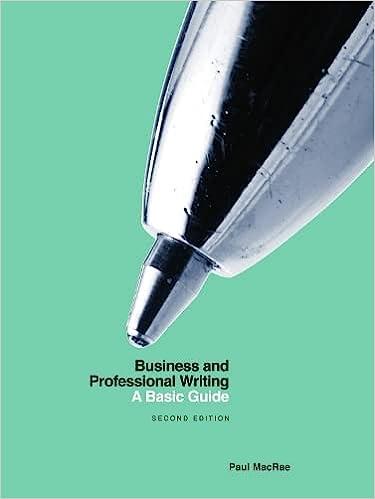1. On the next page is a letter from Oceanic Airways to a customer whose luggage was...
Question:
1. On the next page is a letter from Oceanic Airways to a customer whose luggage was lost for a week. The customer requested money to cover expenses that arose because his luggage had been lost. Those expenses included an electric razor, some new clothing, a new suitcase, and even
$100 for a new power cord for his portable computer (he’d taken the computer into the airplane cabin but had packed the power cord in the suitcase). Although the luggage was eventually found and returned a week later, the passenger was out of pocket for about $400 and asked the airline to cover this expense.
Oceanic’s reply is a combination good-news/bad-news letter. The good news is that the airline offered $240.99 in compensation for expenses. The bad news is the customer won’t get $160 of his claim.
How well does this letter reflect the good-news and bad-news formats discussed in this chapter? Is the good news given immediately? Is there a nod to introduce the bad news? Are the reasons for the refusal of the $160 so clearly explained that the customer will be willing to accept the refusal without ill will? Is there an overt “no” or an implicit
“no”? Rewrite the letter to do a better job. (Note: There are a few minor errors in grammar in the letter too. Can you spot them?)
A sample letter rewritten according to the good-news and bad-news letter formats is on page 408, as is a portion of the original letter with the minor grammatical errors noted and corrected. But don’t peek until you finish your own work!
Step by Step Answer:

Business And Professional Writing A Basic Guide
ISBN: 9781554814718
2nd Edition
Authors: Paul MacRae





